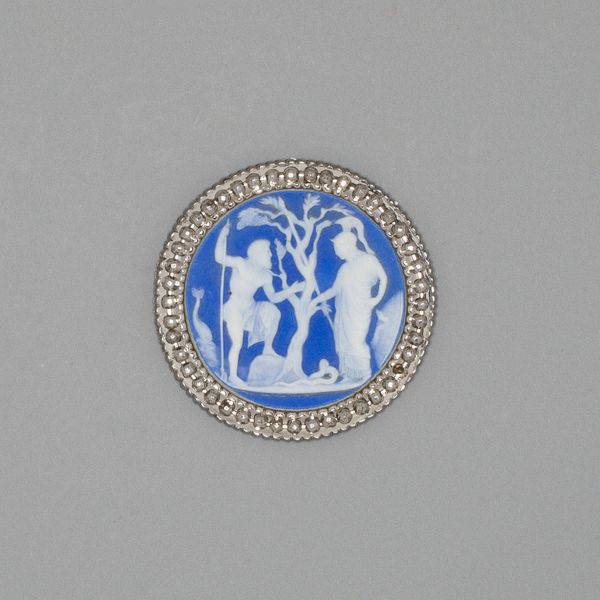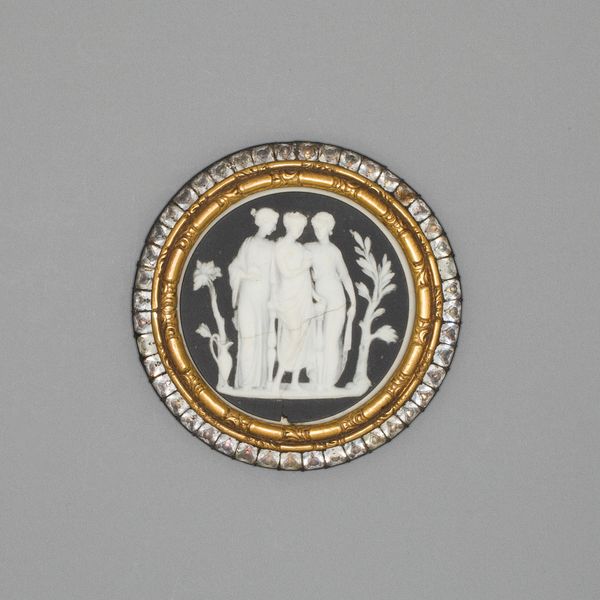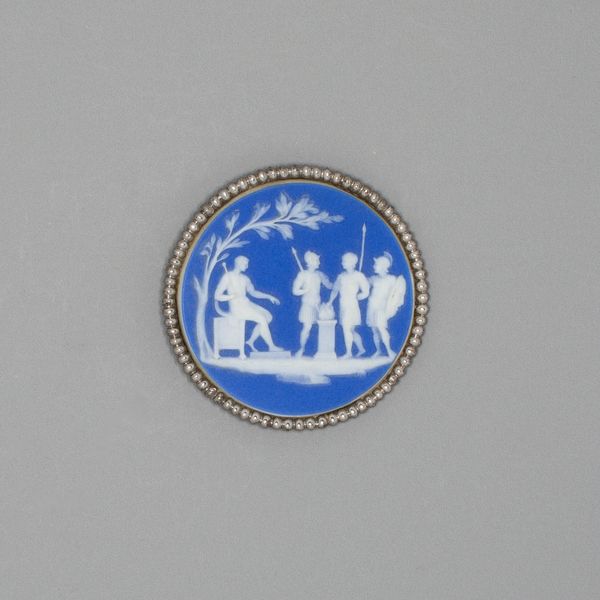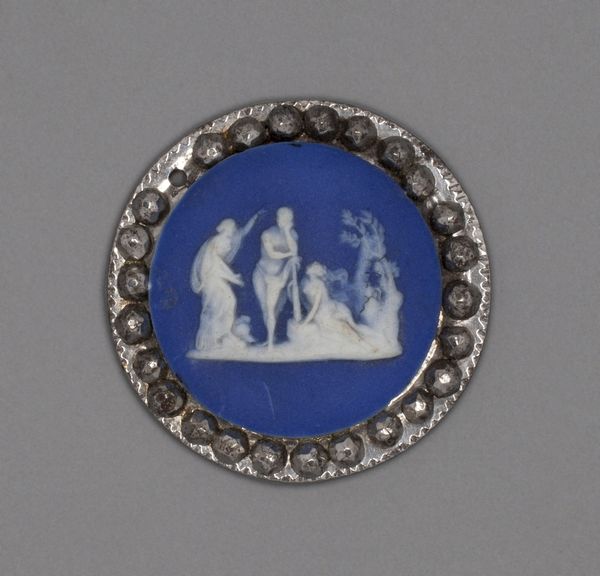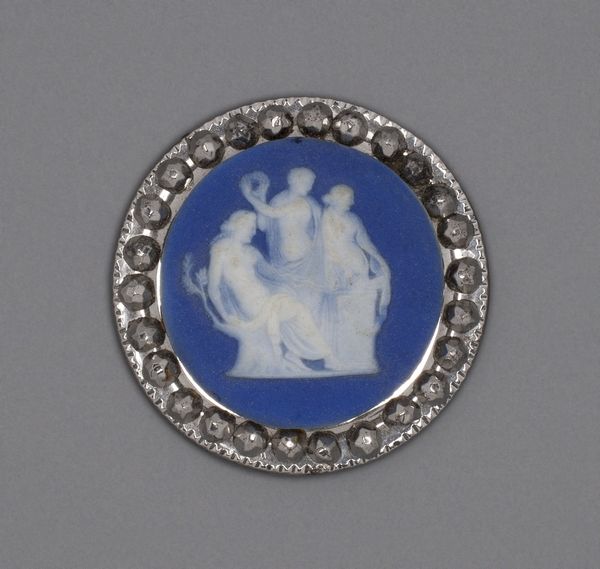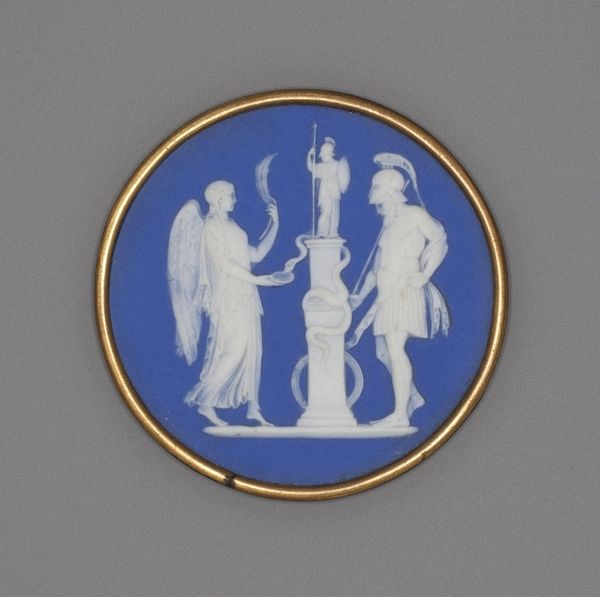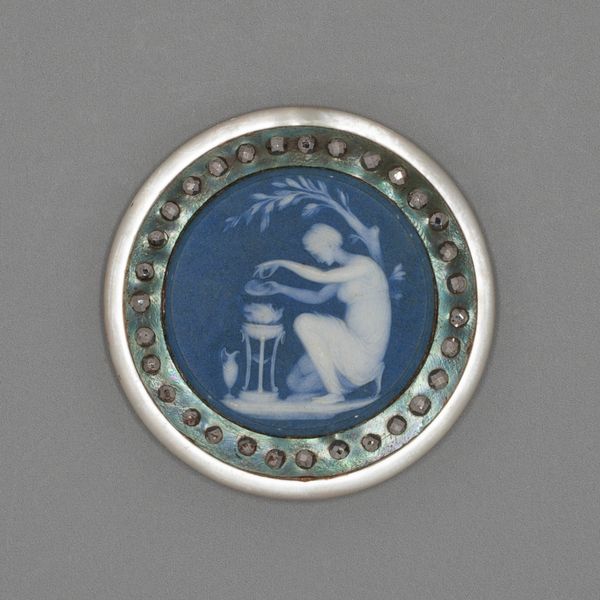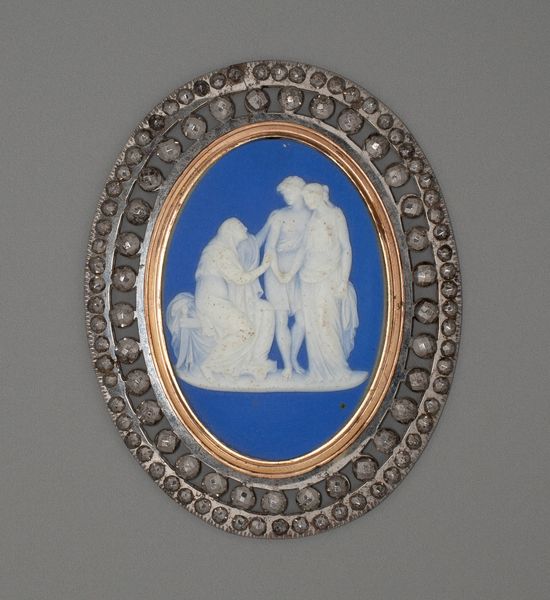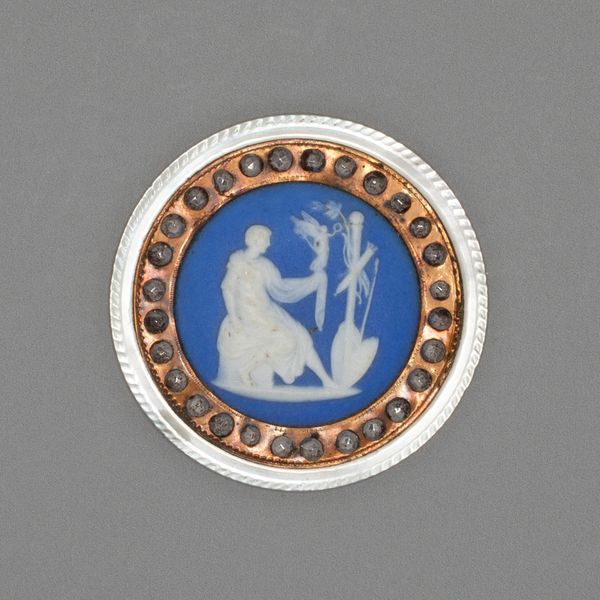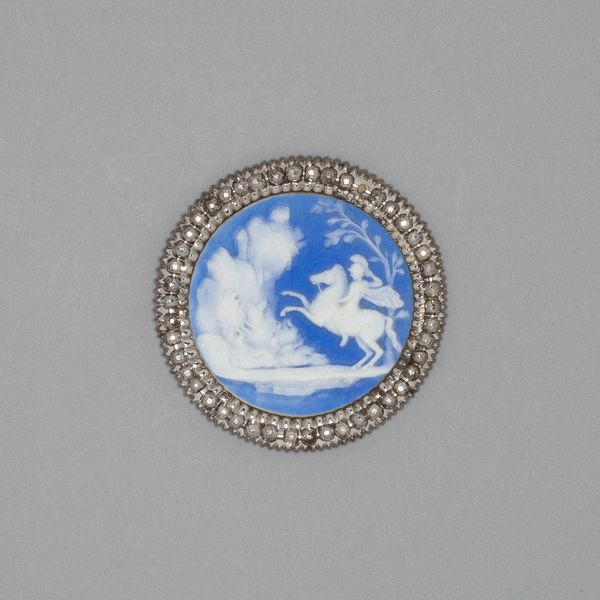
Button with Offering of Victory c. late 18th century
0:00
0:00
relief, ceramic, sculpture
#
portrait
#
neoclacissism
#
decorative element
#
blue colour scheme
#
blue and white
#
war
#
relief
#
ceramic
#
classical-realism
#
figuration
#
sculpture
#
decorative-art
#
miniature
Dimensions: Diam. 4 cm (1 9/16 in.)
Copyright: Public Domain
Curator: Here we have a delicate button, believed to be from the late 18th century, entitled "Button with Offering of Victory." It's attributed to the Wedgwood Manufactory. What strikes you first about it? Editor: The blue and white contrast is immediate—like a memory fading into a distant dream, but that classical figure... it's rigid. Does victory always require such stoicism? Curator: It is a relief design rendered in ceramic, so that might have contributed to that impression. Visually, this is textbook Neoclassicism, echoing the imagery found in ancient Greek and Roman art, reflecting an era's fascination with antiquity. It represents more than simple triumph. Look closely, and it reveals an exchange, an "offering," which introduces complexity. Editor: You’re right; there's a sense of sacrifice suggested in that exchange. We glorify war through emblems like this, masking the true cost, reinforcing hierarchies of power through carefully constructed symbolism. Even the setting—an idealized grove—removes it from any tangible human suffering. It is sanitised brutality. Curator: I see that as well. The "offering" can represent more than just gratitude for a victory in war; it could also serve as supplication, hoping that Mars would look upon the war and provide guidance to the side presenting the offering. There is, too, an evocation of peace embedded within victory's emblem; in its visual presentation, this design borrows from both Greek and Roman interpretations. The figures, the landscape all recall established artistic codes designed to foster specific interpretations of that kind of warfare. Editor: But even peace secured through war remains rooted in violence, and such objects, however beautifully crafted, risks normalising conflict, detaching viewers from its brutal realities. It also reinforces very particular, exclusionary images about those permitted to enter those spaces of warfare... or what that peace will look like to those excluded. Curator: That's a really thoughtful take on the work. It adds so much more perspective when thinking about symbols as embedded within society's beliefs rather than floating freely as standalone markers for meaning. Editor: Yes, definitely. Bringing forth social analysis to any image--whether rendered on a grand scale or as this modest piece--will assist everyone viewing with greater acuity.
Comments
No comments
Be the first to comment and join the conversation on the ultimate creative platform.
